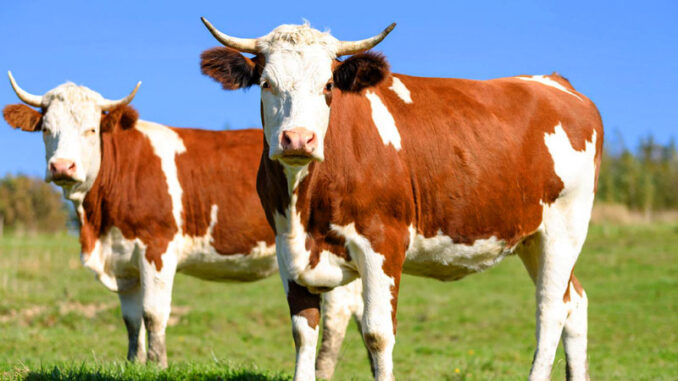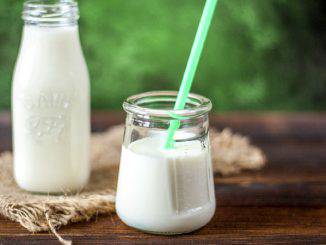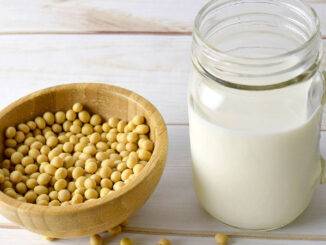
We often come across opinions shared by our readers that using raw milk is the best way to achieve high-quality thick and creamy Kefir. Furthermore, we often read on social media that pasteurization of milk reduces its probiotic properties, and hence the ones of the resulting Kefir.
Let’s find out whether these claims are true.
What is raw milk and what dangers does it hide?
We usually call “raw milk” the milk that is obtained straight from the cow, without the application of any heating or other disinfection methods. Some authors claim that raw milk contains more nutrients and probiotics, compared to pre-boiled or pasteurized milk.
However, it is important to stress that raw milk may contain a vast range of harmful organisms such as E.coli, Salmonella, Listeria, and Cryptosporidium, no matter how stringent the hygienic measures during the cow’s milking are.
These harmful and extremely dangerous microorganisms to humans could be present in raw milk after contact of milk with the cow’s feces, but could also be due to a disease of the cow that may remain unnoticed by the farmer because they are far less dangerous to the cattle than to humans.
These microorganisms can lead to severe infections in humans, including acute gastroenteritis often followed by complications such as hemolytic uraemic syndrome (HUS) sometimes leading to life-threatening kidney (renal) failures.
In the US, between the years 2000 and 2012, there have been 826 cases of illnesses due to the consumption of raw milk, of which seven were fatal.
That is the reason why in most countries (including most states of the US) the official distribution of raw milk is prohibited by Law.
Is raw milk more valuable?
One of the most widespread arguments of raw milk fans is that raw milk contains more nutrients and probiotics compared to pasteurized milk. In fact, such a claim is simply false.
First of all, pasteurization, and even UHT processing, do not alter in any way the contents of nutrients in milk. The nutritional value of milk remains exactly the same before and after pasteurization. Pasteurization and UHT processing only eliminate the potentially harmful microorganisms that may be present in milk, without altering its nutritional virtues.
Secondly, fresh raw milk does not normally contain any probiotic microorganisms at all. These beneficial microorganisms (mostly lactic acid bacteria) are introduced to milk after contact of milk with the Kefir grains or the Kefir starters, or, when it comes to yogurt, with the yogurt cultures. The milk gets converted into a probiotic product only after fermentation. In other words, since pasteurization happens before the fermentation of Kefir, it cannot alter its probiotic properties in any way.
What are pasteurization and UHT processing?
As we know, our parents and grandparents used to pre-boil raw milk in order to eliminate the danger of the potentially harmful bacteria that may be present in raw milk. The problem here is that milk pre-boiling may lead to the coagulation of some proteins in milk which may alter its nutritional values and taste.
To prevent such coagulation but still eliminate the potentially harmful bacteria from milk, pasteurization comes to the rescue. This process has been invented by French chemist and microbiologist Louis Pasteur and consists in briefly heating milk to relatively low temperatures, and then cooling it fast.
Pasteurization is a process in which milk is heat-treated typically at 72-74°C (161-165°F) for about 15-20 seconds, which is enough to kill all pathogenic microorganisms that can cause disease and illness in humans.
However, while pasteurization makes milk fully harmless, some microorganisms that cause spoilage could still survive pasteurization, limiting the shelf life of pasteurized milk to a maximum of a week, if refrigerated.
And here comes the so-called UHT processing, standing for “Ultra High Temperature” processing.
UHT processing consists in rapidly heating milk to a relatively high temperature of at least 135°C (275°F) for only a few seconds, and then quickly cooling it down.
UHT treatment is achieved through a brief contact of milk with super-heated steam, followed by rapid vacuum cooling. The brevity of this heat treatment makes it possible to maintain excellent quality milk while preserving all of its nutritional values.
In this way, since all microorganisms (both pathogenic and spoilage ones) have been destroyed, milk that has been UHT treated and packed aseptically can be stored for months even without refrigeration.
Does the use of pasteurized or UHT-treated milk affect the probiotic virtues of Kefir?
And here comes the most important part of this entire article!
The answer is: absolutely not! The use of either pasteurized or UHT-treated milk does not affect the probiotic virtues of Kefir in any way.
As we said earlier in this article, probiotic microorganisms are introduced to milk only after its contact with the Kefir culture (Kefir grains or Kefir starters).
Actually, the presence of lactose in milk is the only requirement for the Kefir cultures to work as expected and generate valuable probiotic microorganisms.
So, since neither the pasteurization nor the UHT processing anyhow interfere with the milk lactose, neither the pasteurization nor the UHT processing will negatively affect the probiotic values of the resulting Kefir.
Some people say that raw milk gives a creamier Kefir. Why?
Unfortunately, this is another widespread misconception.
It is true that in some cases Kefir made with raw milk may look creamier and smoother, and may even taste better. However, this is normally due to the fact that in most cases the raw milk is obtained directly from cow farms, and its content of fats is around 4.5% which is the normal average fat content of natural cow’s milk.
However, such fat content is impossible to be seen in any commercially packaged milk. Even the milk commercially sold as “full-fat” is standardized to 3.5% of fat, semi-skimmed milk contains approximately only 1.5% of fat, and skimmed milk may contain as low as 0.2% of fat.
To cut a long story short, the higher fat content is the only reason why sometimes raw milk Kefir may look and feel creamier. This has nothing to do with its probiotic virtues, so, to stay on the safe side, because of its numerous risks, we would not recommend the use of raw milk to prepare your Kefir.
The commercially sold pasteurized full-fat milk and even UHT milk are perfectly fine and will give you a safe probiotic-rich product. If you still insist on having a thicker and creamier Kefir, you can fairly add some cream to milk to increase its fat content, or read our article on “How to make a thicker and smoother Kefir?“.



